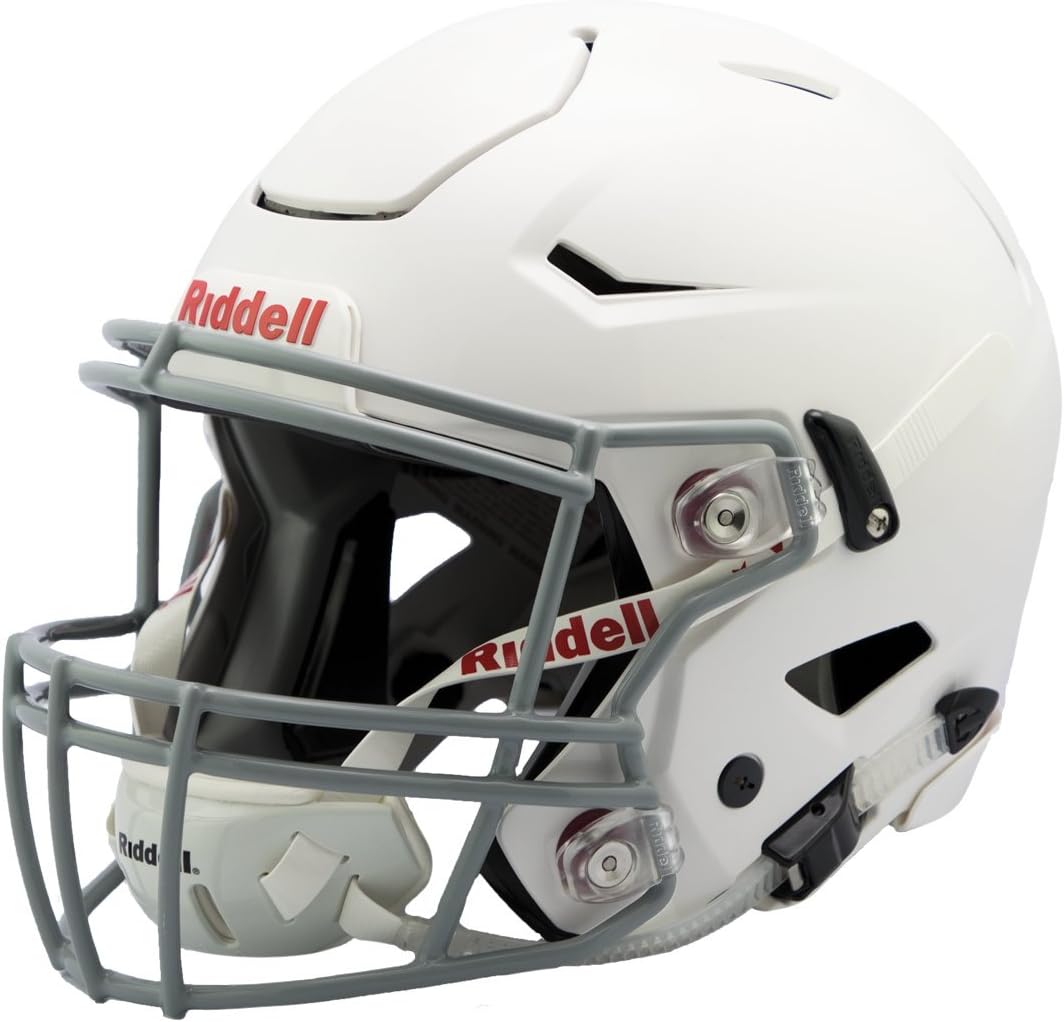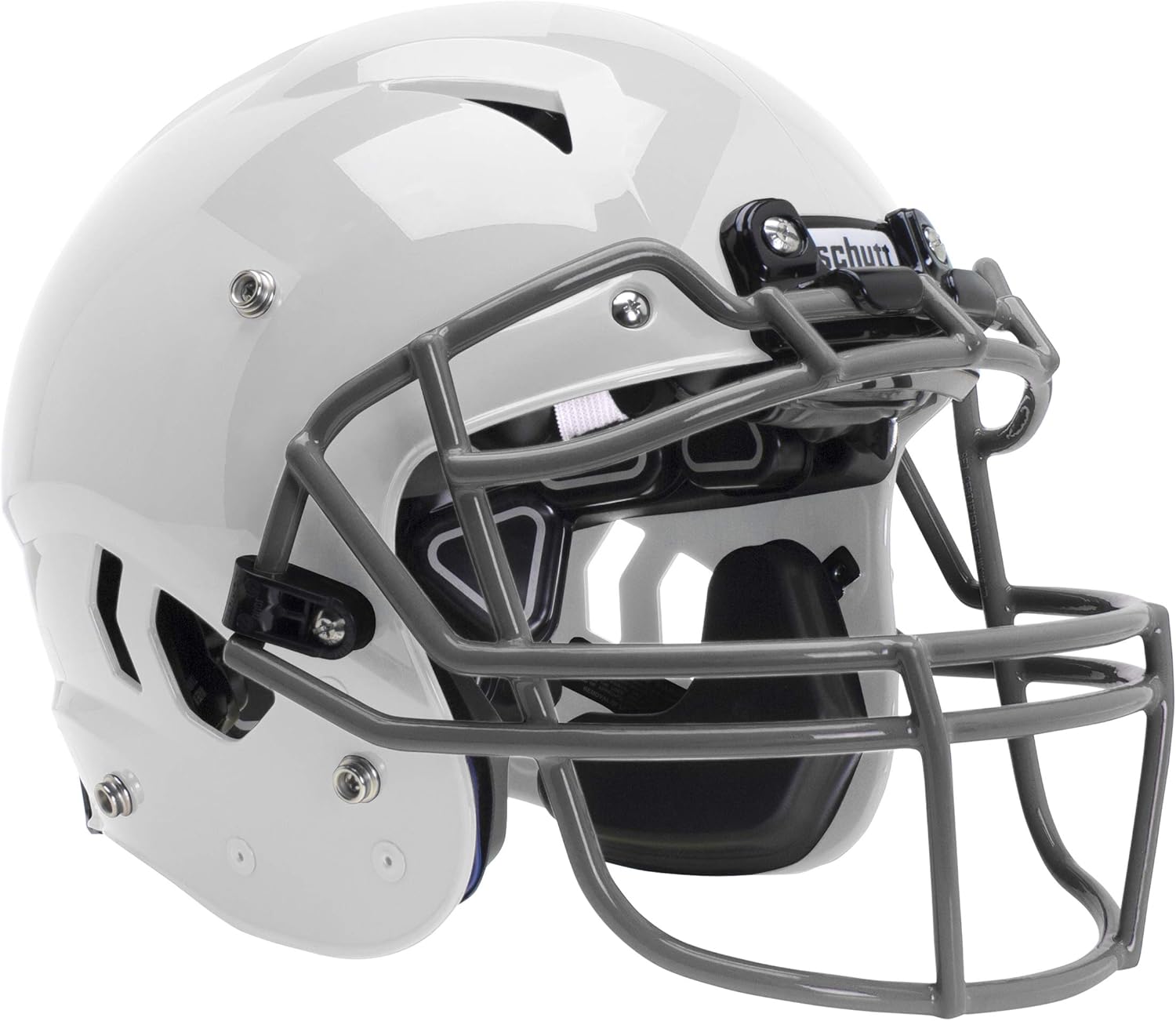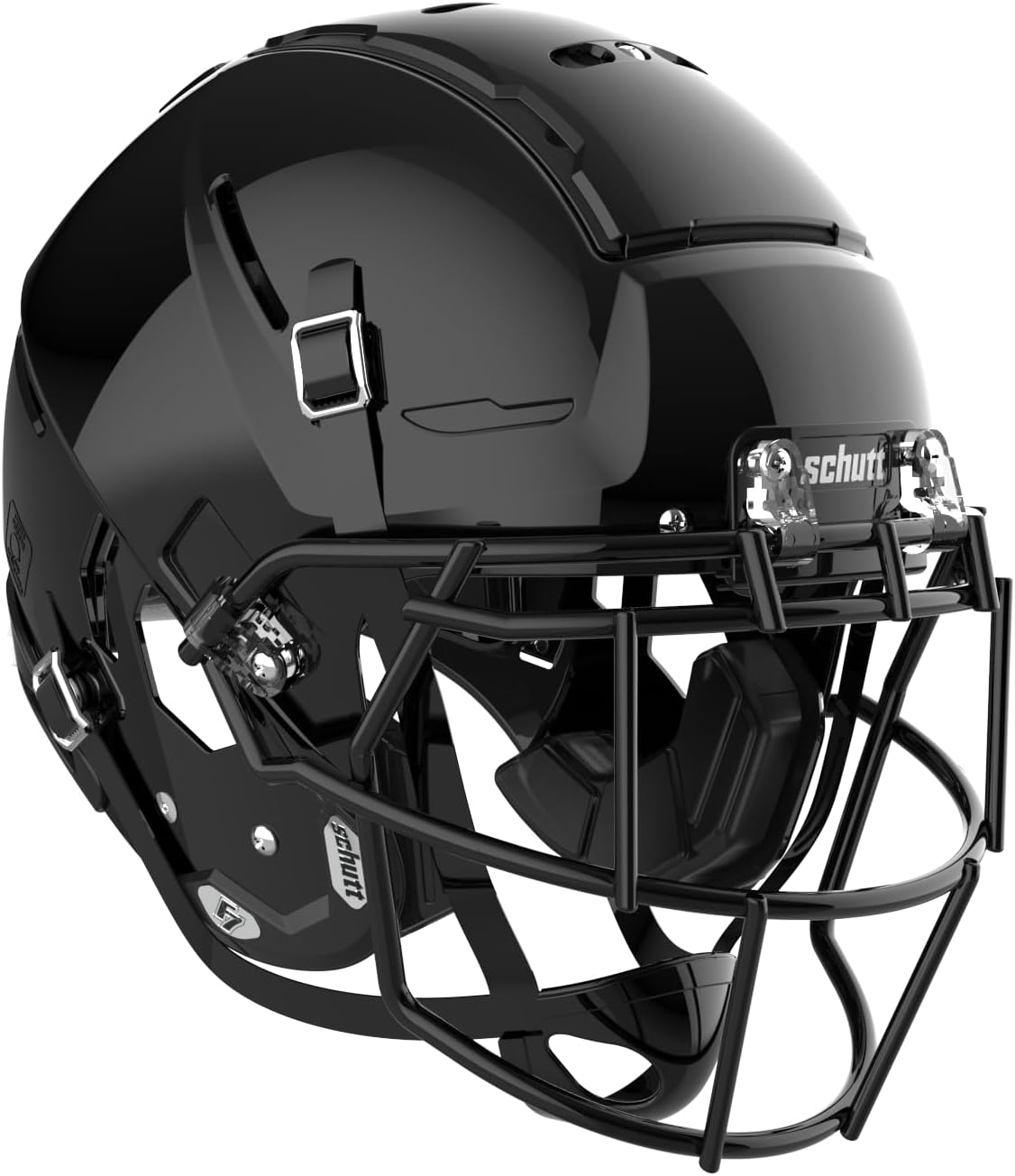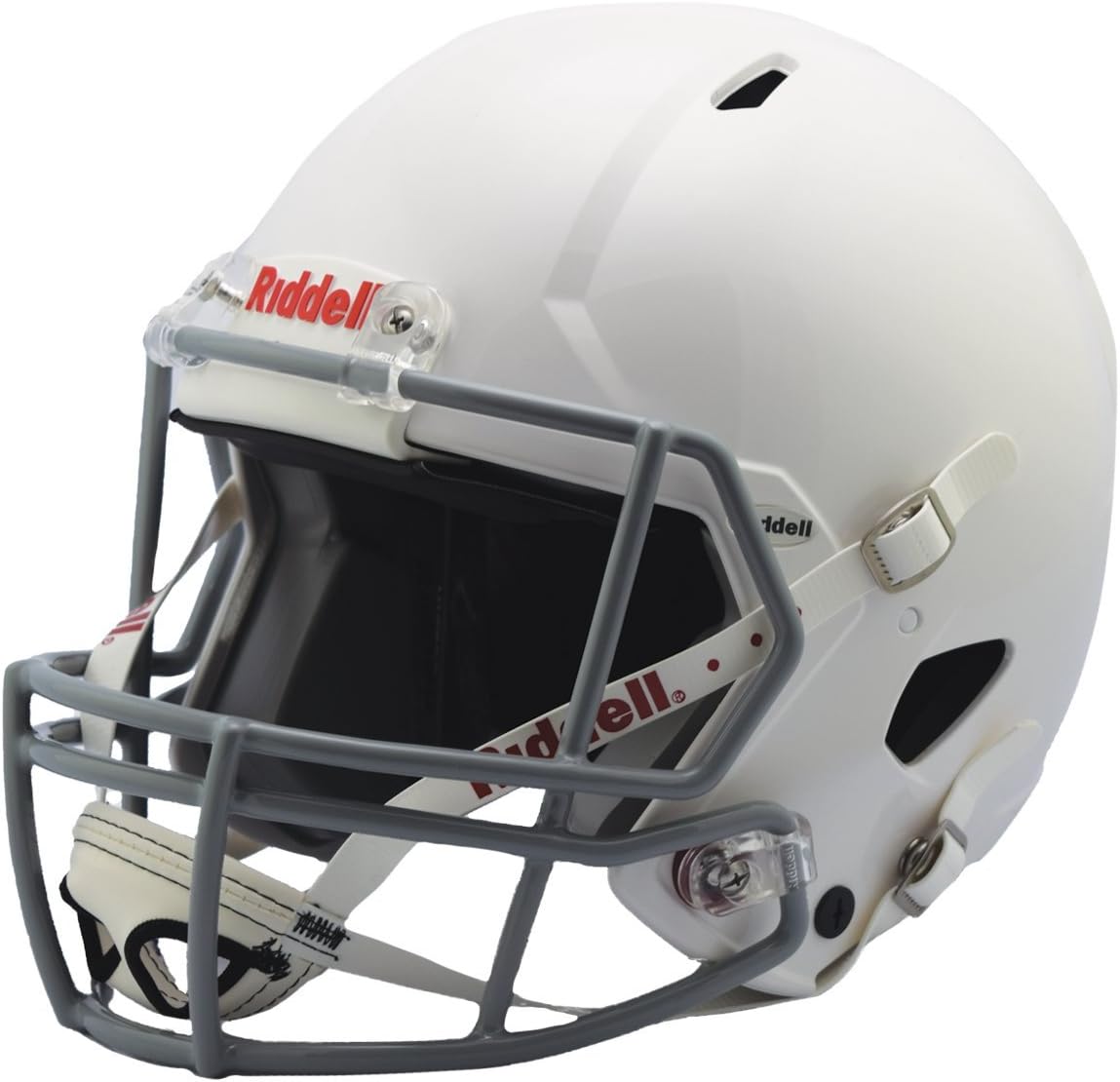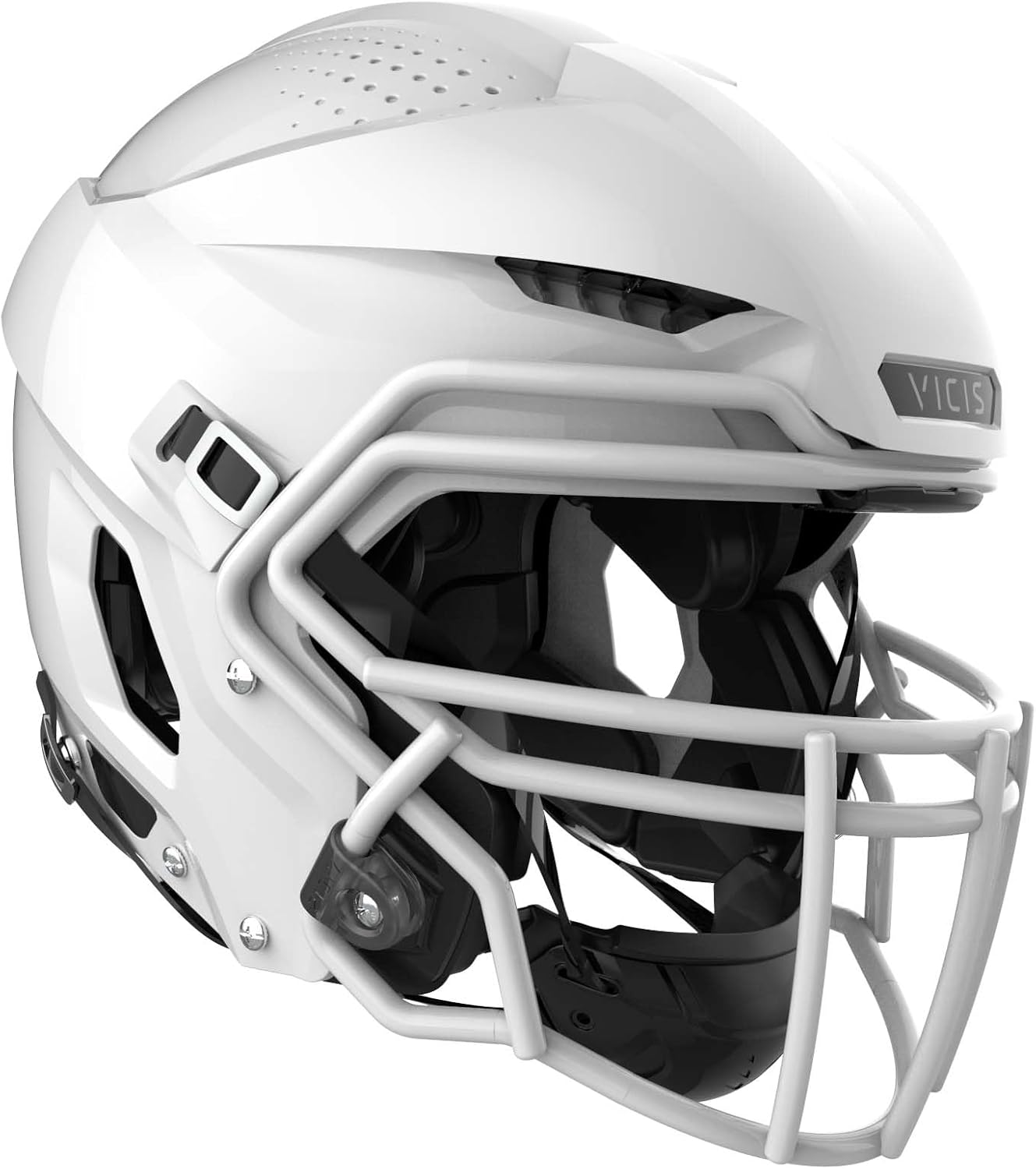History of American Football Helmets
As the most striking and striking equipment on the field, the American football helmet epitomizes the fusion of aesthetics and technology. However, it did not initially possess the “high aesthetic appeal” and “high performance” that it now exhibits. Over the past century, from the early 20th century to the present, the evolution of helmets has not only witnessed the development of American football but also the transformation of human technology.

1920s: First introduced
The helmet, which first emerged in the early 1920s, was more akin to a “hat” than a “helmet”. The helmet body was crafted from soft cowhide, lined with a very thin layer, which didn’t fully conform to the shape of the head, resulting in subpar comfort and cushioning.
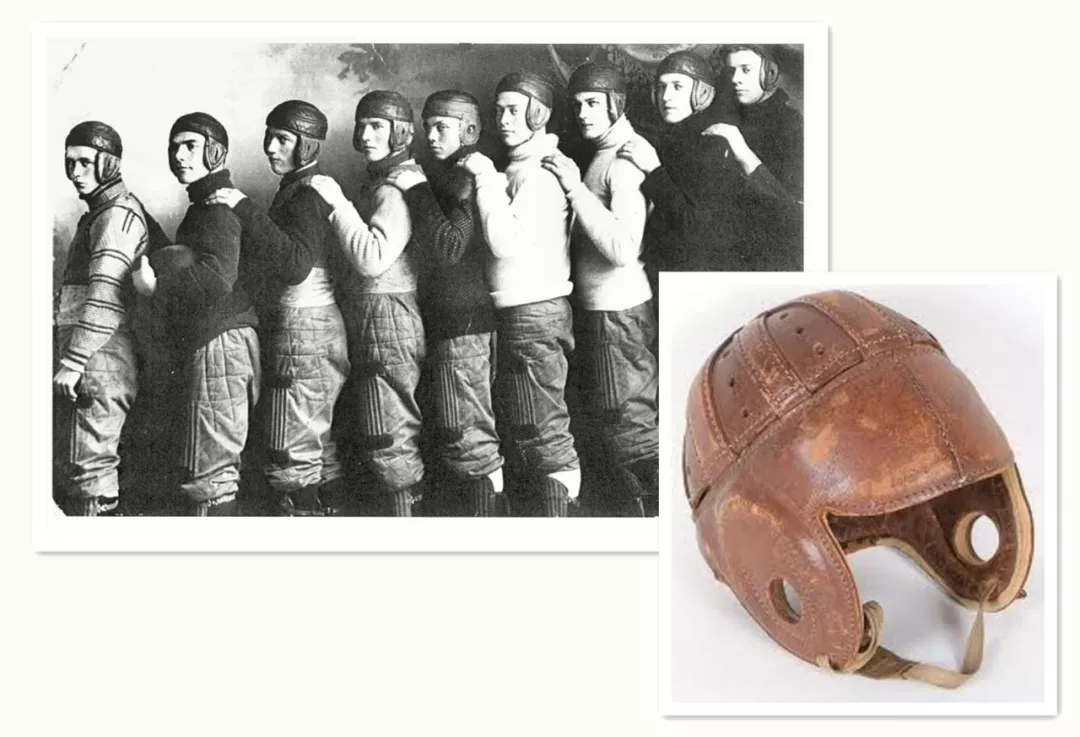
1930s: Revolutionary Breakthrough
Helmet manufacturers have begun to use hard shell materials, yet the level of protection remains inadequate, resulting in numerous head injuries among players during games. Additionally, due to poor breathability, wearing the helmets can be quite stuffy and uncomfortable.
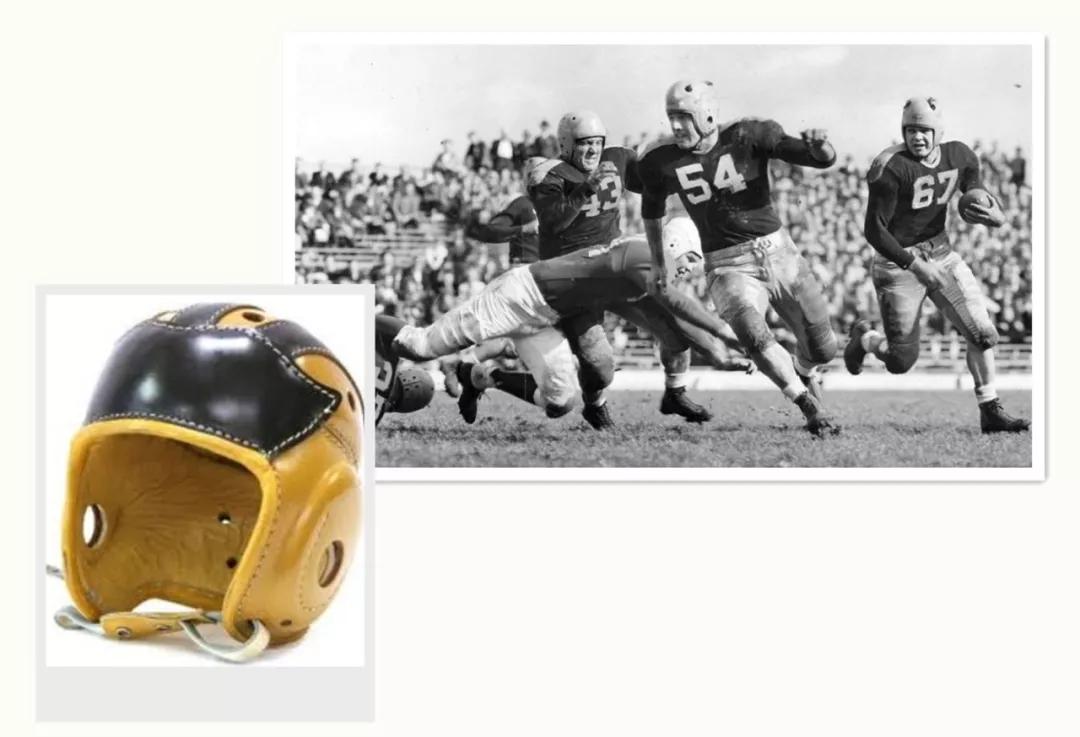
However, a historic turning point was reached in 1939 when Riddell Corporation in Chicago first introduced plastic helmets. These helmets surpassed leather ones in terms of both hardness and durability. From then on, the era of plastic hard-shell helmets began.
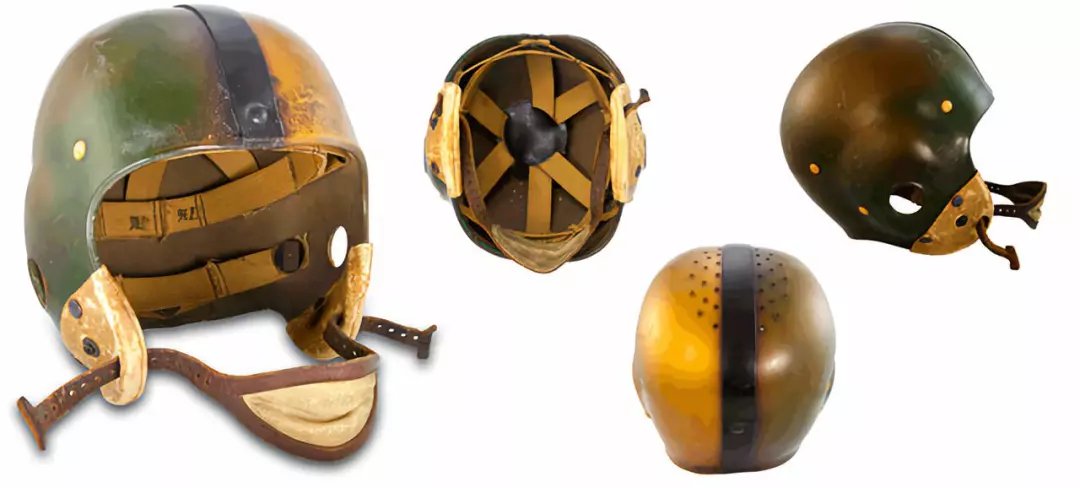
1940s: Cortical curtain call
Plastic helmets were not yet widespread, still had imperfections, and were briefly banned by the NFL. Leather helmets remained the mainstream, and team logos began to appear on helmets for the first time. In 1940, chin straps were introduced. In 1943, the NFL mandated helmets as standard equipment for games. In 1949, the NFL officially announced the approval of using plastic helmets.
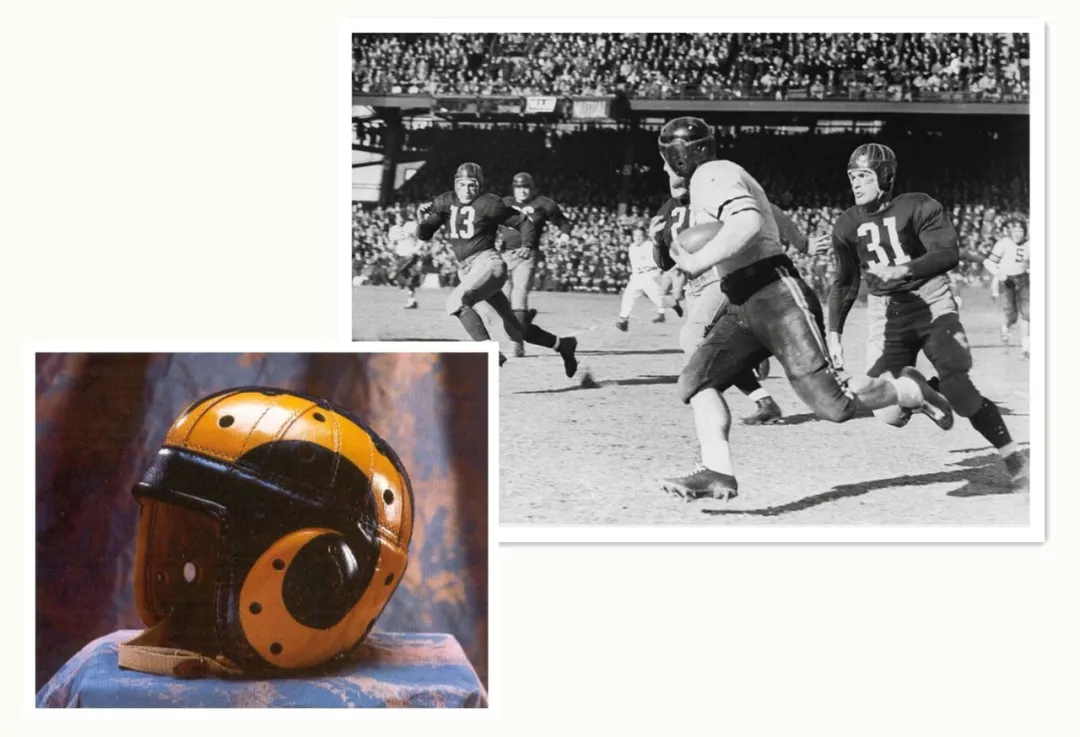
1950s: The Beginning of Upgrades
1950s: The Beginning of Upgrades Helmet materials transitioned entirely to plastic, with the addition of internal padding. In 1955, the predecessor of the face mask emerged (a single circular tube). In 1956, the Cleveland Browns were the first to “communicatize” helmets by incorporating radio functionality.
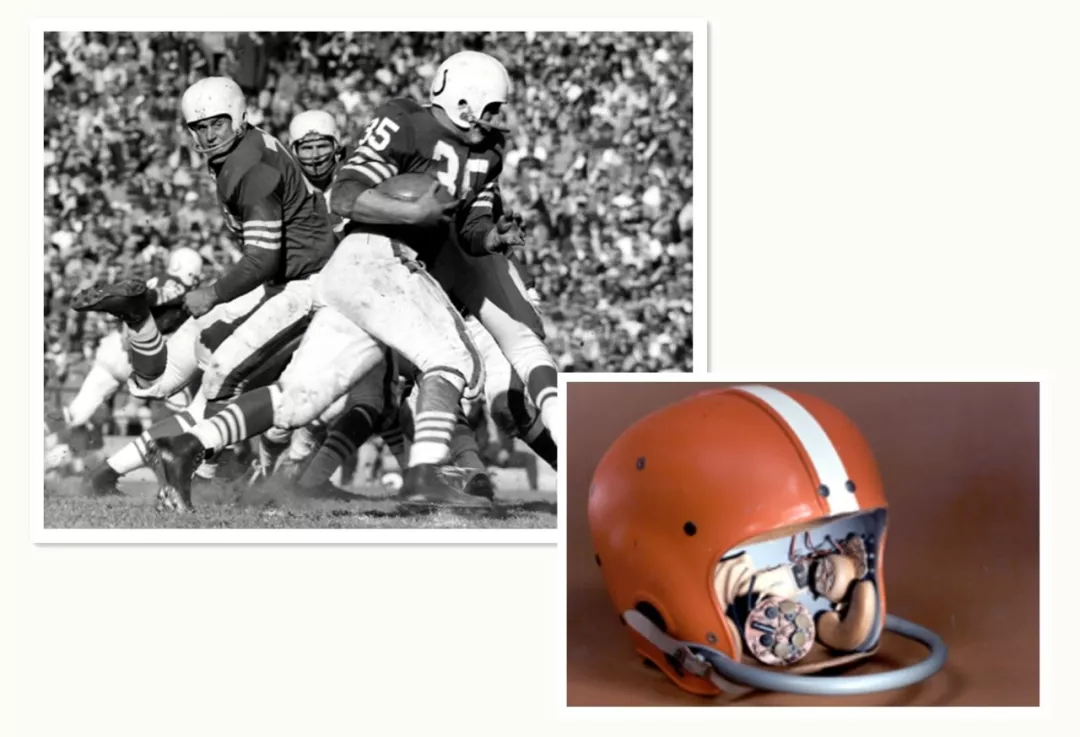
1960s: Masks were introduced
In 1962, the “dual tube face mask” appeared. NFL official announcement: All helmets must be equipped with face shields.
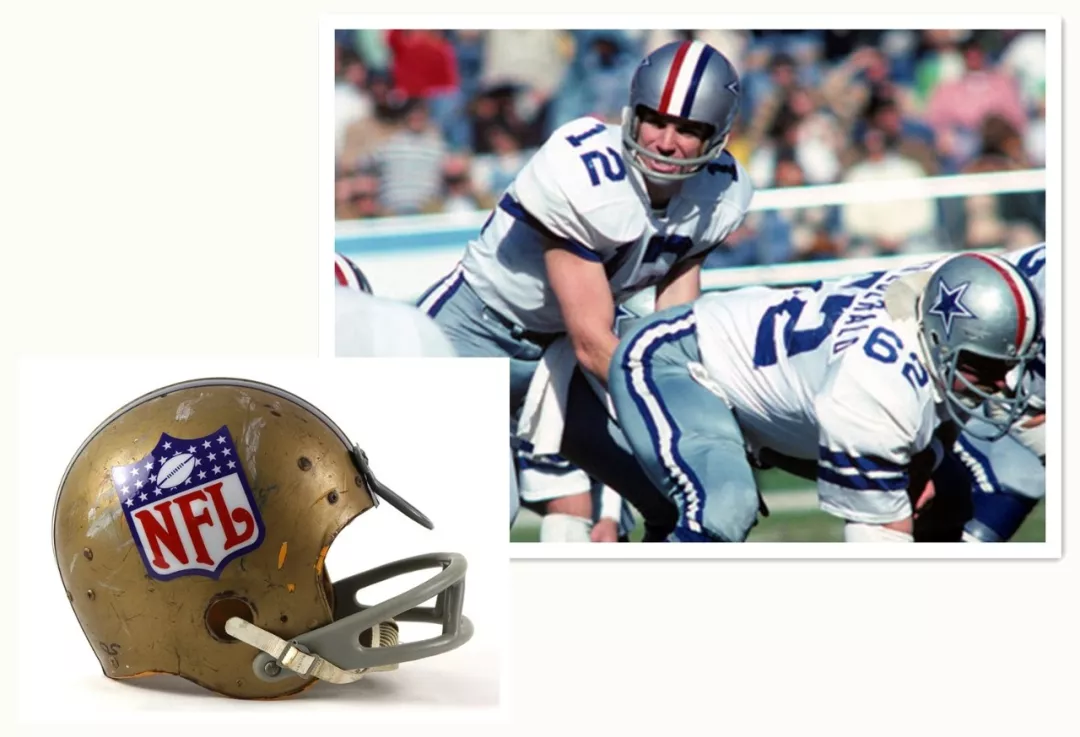
1970s: Protection Enhancement
Whether it’s the advent of internal shock absorption design or further enhancements to the face shield, the protective capabilities of the helmet have undergone a comprehensive upgrade from the inside out. In 1971, Riddell pioneered the use of “airbag” cushioning within helmets. In 1975, the debut of the first “full-face mask” marked the official commencement of the NFL’s modern face mask era.
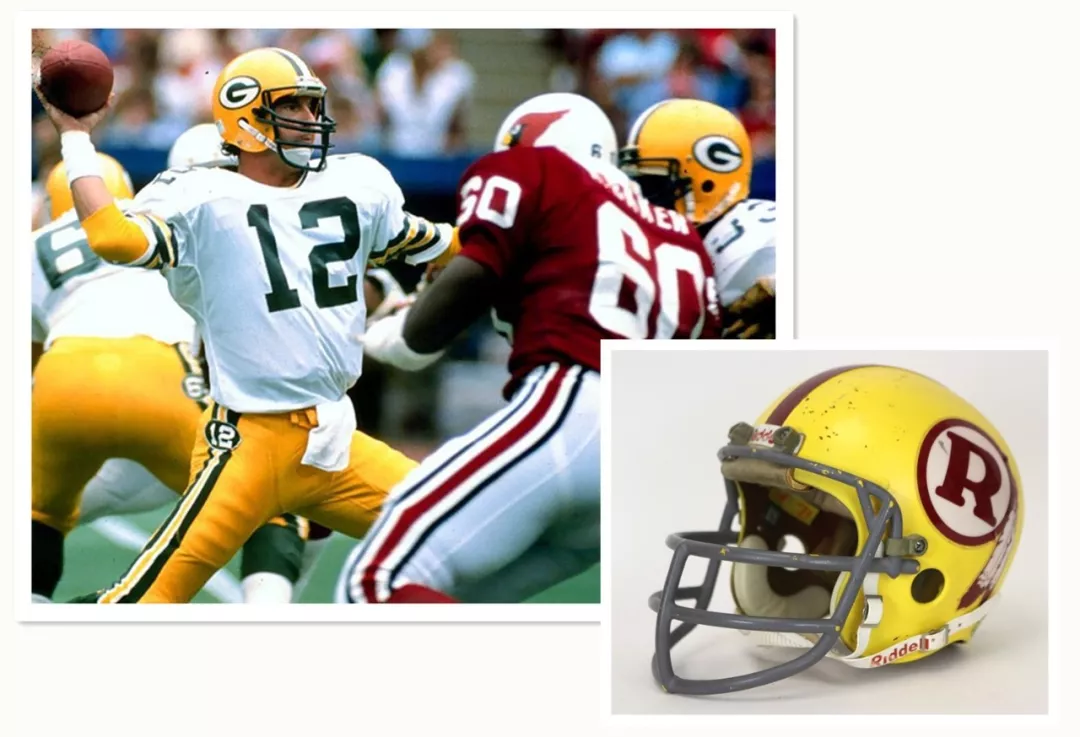
1980s: Another Leap Forward
For the first time, polycarbonate has been used, and the helmet material has once again achieved a leap forward. In 1984, goggles first appeared. In 1986, the first polycarbonate helmet was introduced.
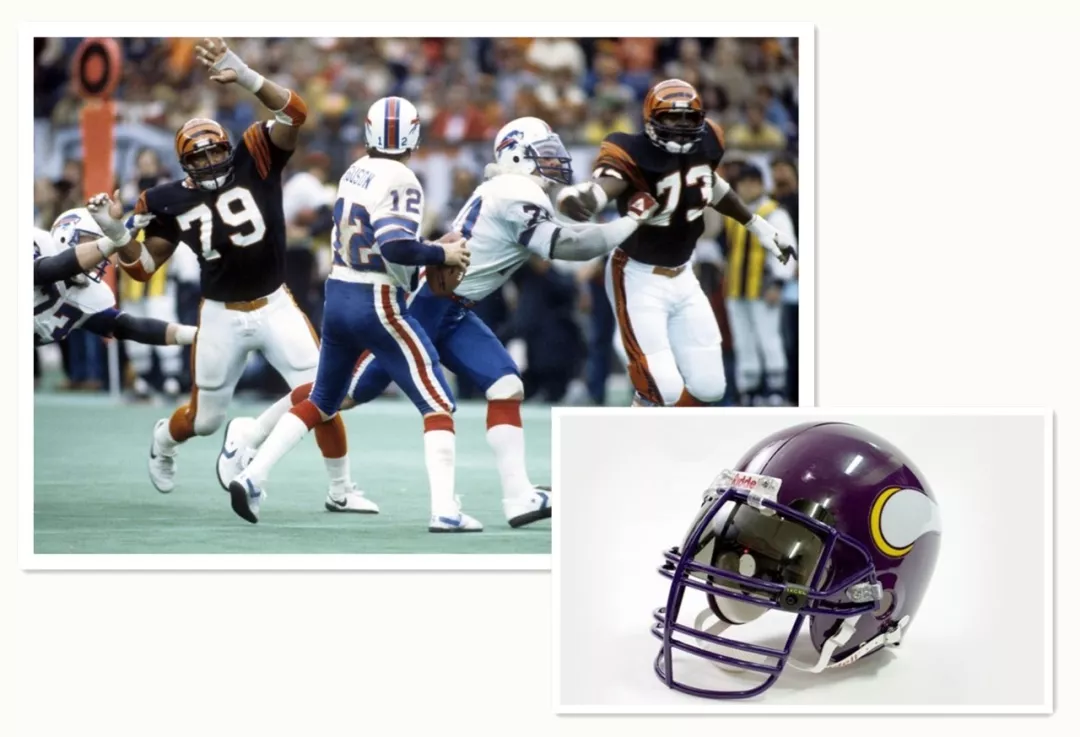
1990s: Detail specifications
Polycarbonate helmets are widely adopted, and the styles of helmet visors are constantly evolving. In 1998, the NFL mandated that visors must be “transparent” and not excessively obstructed, ensuring that players’ faces can be seen.
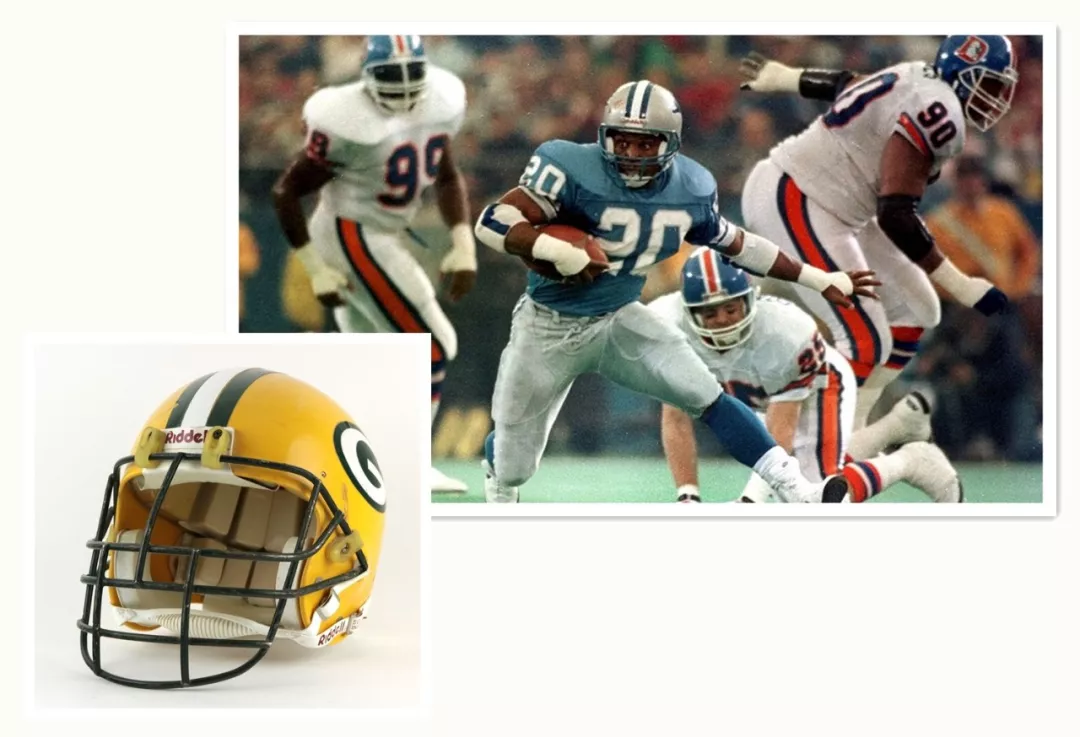
2000s: Security Innovation
Entering the 21st century, Riddell once again achieved technological innovation, developing a revolutionary helmet that significantly reduces the risk of concussion. In 2004, the NFL officially announced the complete phasing out of single-tube face masks.
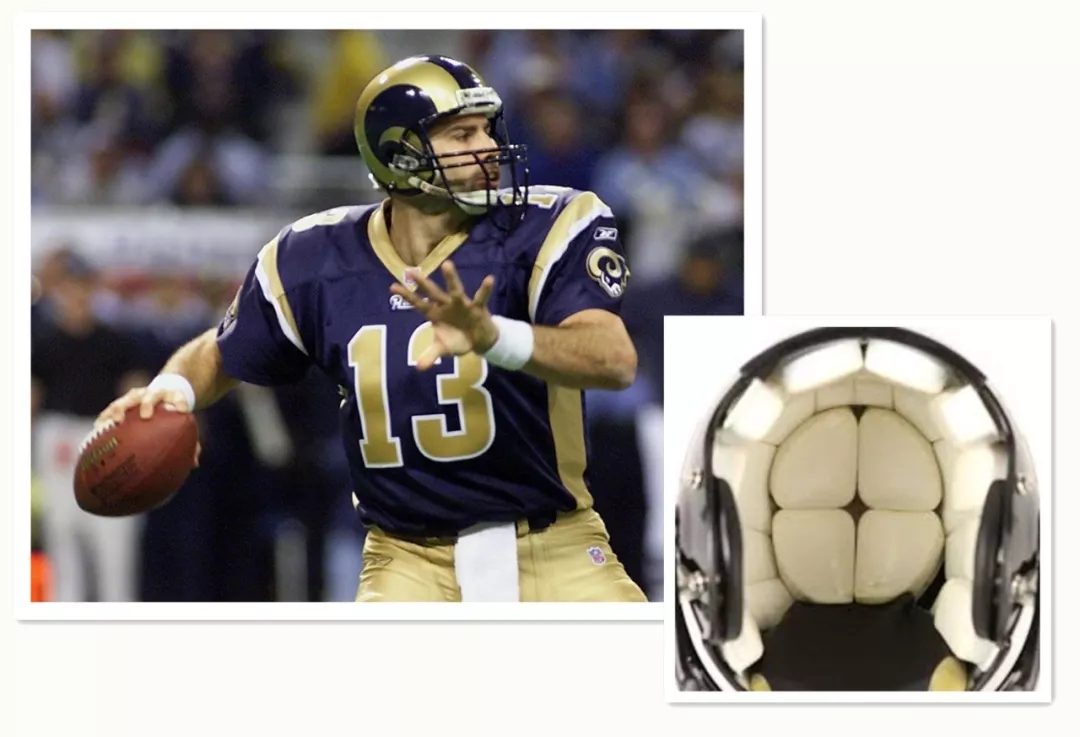
2010 present: Innovation continues
In 2011, the chin strap was enhanced with the “Impact Index Display” feature to assess the severity of external injuries sustained by players’ heads.
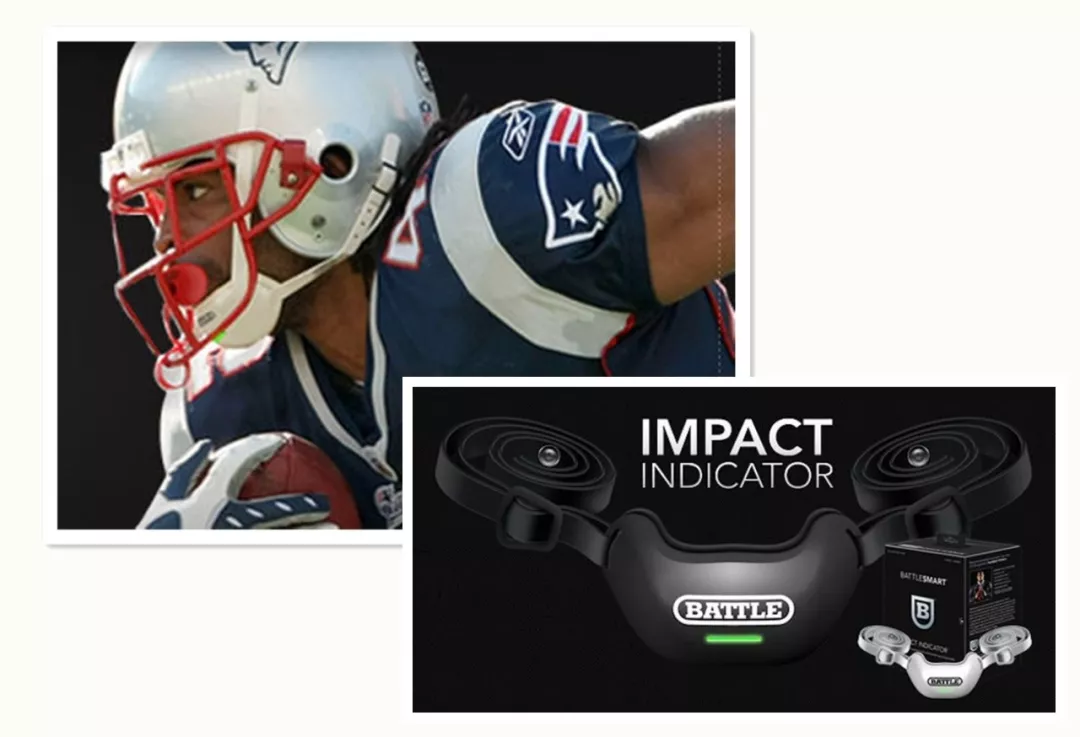
Dismantling of American Football Helmet

American football is a genuine and intense competition, challenging speed, strength, and mental acuity. Physical collisions are intense and frequent, with falls being a common occurrence. Reliable protective gear ensures player safety and safeguards their sports career. Utilizing cutting-edge technology to protect the most vital body parts, a helmet stands as the most crucial protective gear, integrating multiple technologies. Modern rugby helmets typically consist of the following components: helmet shell, internal protective system, visor, chin pad, chin strap, and goggles.
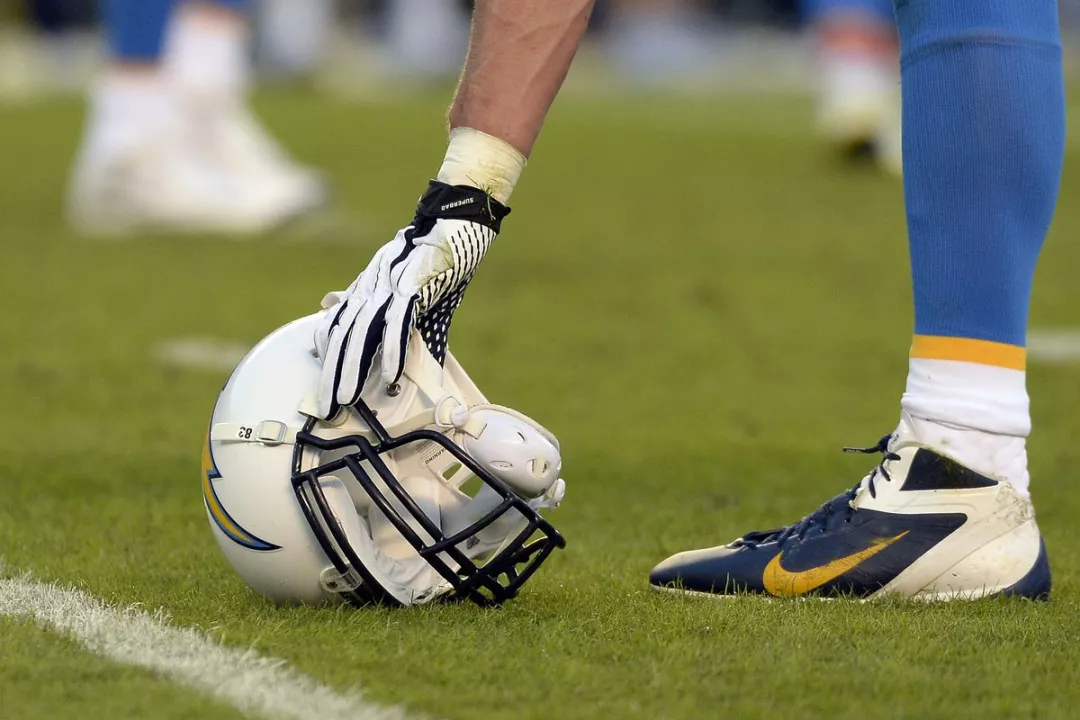
Helmet Shell
The invention of modern helmets is believed to have originated in 1939, when Riddell Corporation in Chicago introduced the first plastic helmet. It was lighter and more durable, revolutionizing the era where leather was the primary helmet material. As technology advanced and material applications matured, polycarbonate alloy became the mainstream material for modern helmet shells. Through hot melt and hot pressing reverse molding, the resulting product is sturdy, durable, and lightweight.
Internal Protection System
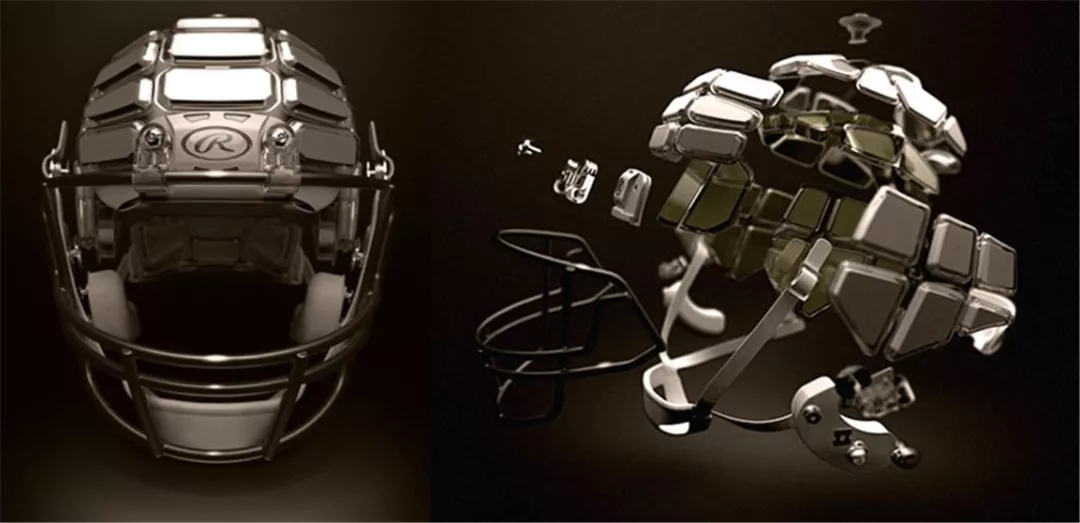
The most prevalent internal protection in helmets today originated in the 1970s. It’s hard not to marvel that Riddell stands as a true pioneer in the helmet industry! This protective unit, known as Protective Air Liners, is crafted from foam material, die-cut molded, and offers adjustable inflation. It is distributed across the top, sides, and rear of the head. Apart from cushioning and distributing external impact forces, it also allows for fine-tuning of wearing comfort by adjusting air pressure.
Jaw Pad
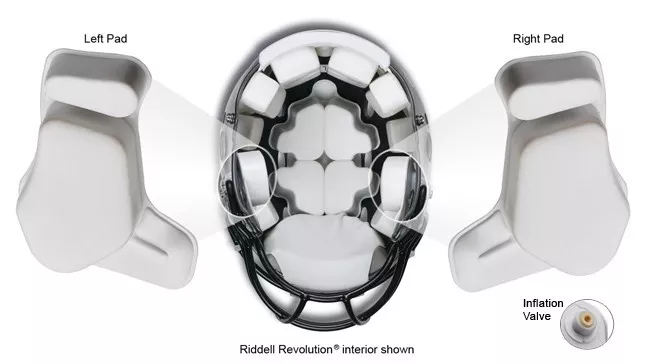
The chin pad is an essential accessory that requires separate installation. It is positioned below the earlobe and attached to both sides of the helmet’s interior. Given the varying widths of players’ faces, chin pads are available in different sizes (with varying thicknesses) to ensure a safer fit. It’s akin to trying on clothes; one needs to find the most comfortable one to wear.
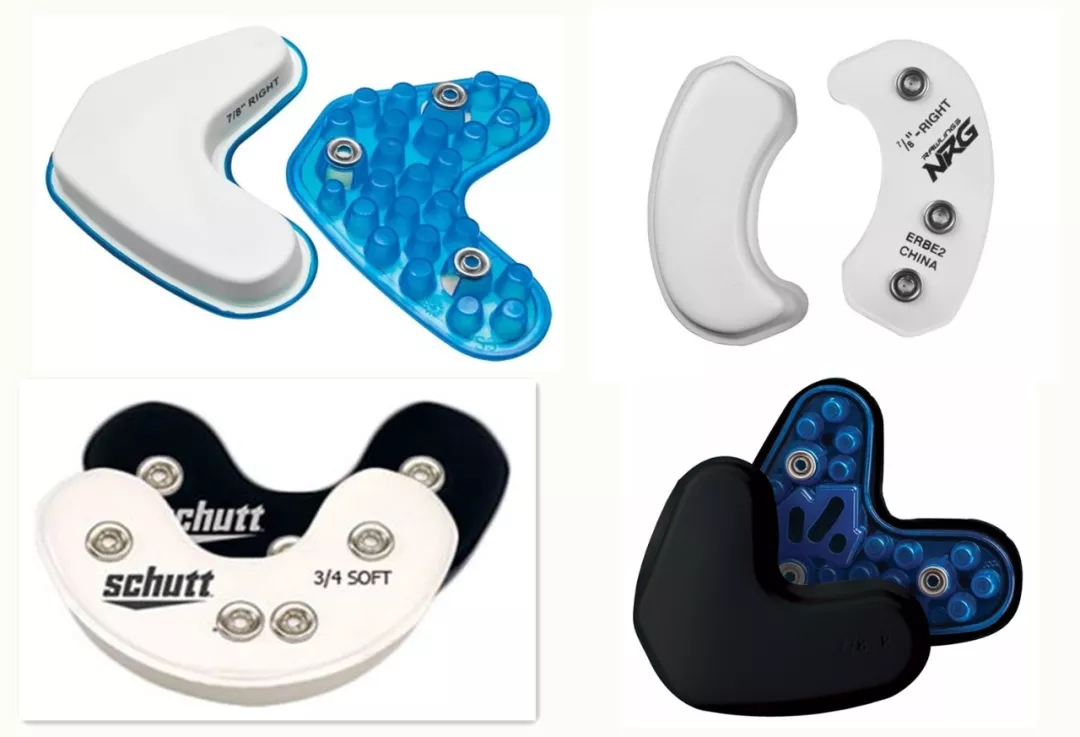
Face Mask

The face mask is the component with the highest technical content and the most stylish features, aside from the helmet’s internal protection system. Face masks are available in various materials, with differing weights and costs. There are three common types: carbon steel, stainless steel, and titanium alloy.
Weight: Carbon steel > Stainless steel > Titanium alloy
Titanium alloy of the same style is 60% lighter than carbon steel.
Price: Carbon steel < Stainless steel < Titanium alloy
The price of titanium alloy of the same style is basically 3-4 times higher than that of carbon steel.
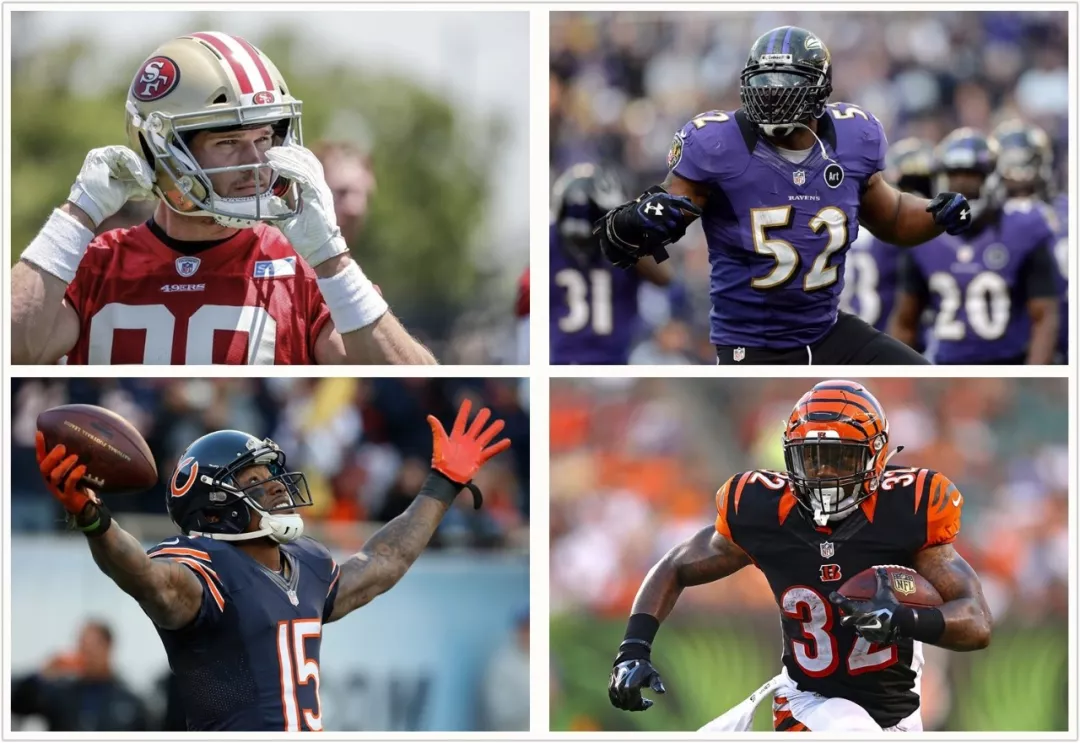
Wide receivers and quarterbacks require a broad field of vision, necessitating a larger eye opening in their face masks to ensure unobstructed vision. Positions with frequent collisions, such as running backs and linebackers, demand a smaller eye opening in their face masks to prevent accidental injuries to the face, particularly the eyes. The face masks for players on the offensive and defensive lines are required to be slightly longer vertically to prevent being pushed into the chin when a player impacts from below. Of course, there are no strict requirements for this, and players can choose according to their preferences. In short, the more steel bars on the face mask, the heavier the weight naturally, which is a significant test of neck strength. Therefore, in daily training, it is important to remember to strengthen neck strength. For example, performing head lifts with weights (such as using elastic bands).
Chin Strap
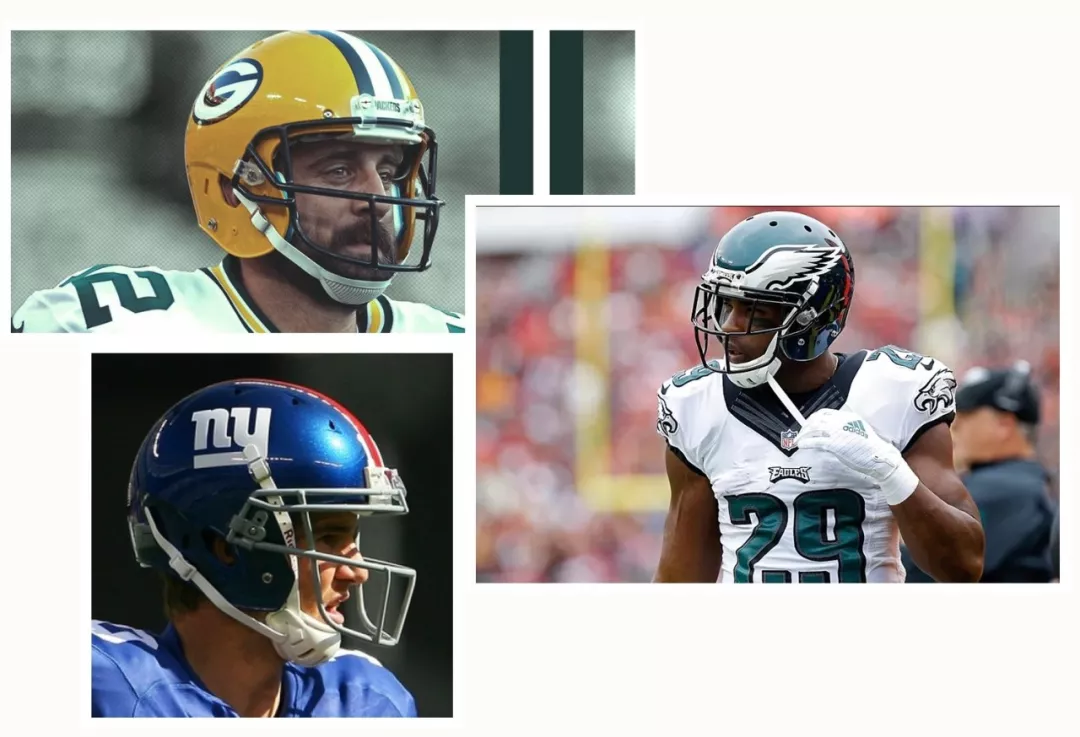
A chin strap, similar to a face mask, is an indispensable accessory for helmets, serving to secure the helmet on the head and prevent it from being knocked off during play. There are three common installation methods: single strap, low-point, and high-point. Many players prefer to use both high and low point installations. However, there are also individuals who prefer unconventional approaches, such as Aaron Rogers, the quarterback of the Green Bay Packers, who is a staunch advocate of single-strap installation. Chin straps are available in two materials: soft leather and hard shell. Typically, each helmet comes with a complimentary soft leather chin strap. The advantage of this strap is that it provides a comfortable fit. Although the hard shell chin strap is sturdy, it can be uncomfortable if not properly sized. However, when facing powerful impacts, its protective capabilities are overwhelming. The intense collisions during offensive and defensive exchanges, as well as the downward impact from opponents during ball-carrying charges, can be particularly brutal.
Visor
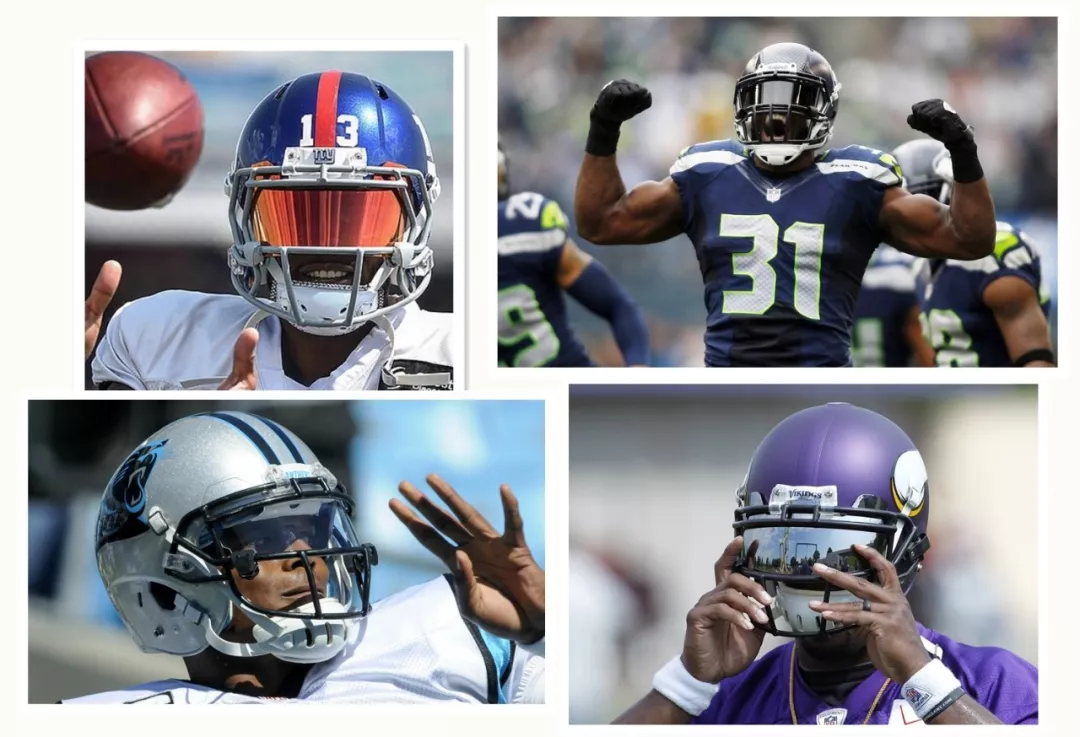
An optional accessory on the helmet, typically worn by players with eye injuries. This is because goggles can affect vision, particularly in weather conditions such as rain, snow, and fog. However, due to the stronger and more frequent collisions experienced while charging with the ball, many running backs in the league opt to wear them for better protection. Goggles are optional accessories on the face mask, thus they have high compatibility (unlike chin pads). Brands such as Nike, Oakley, and Under Armour all produce such products.
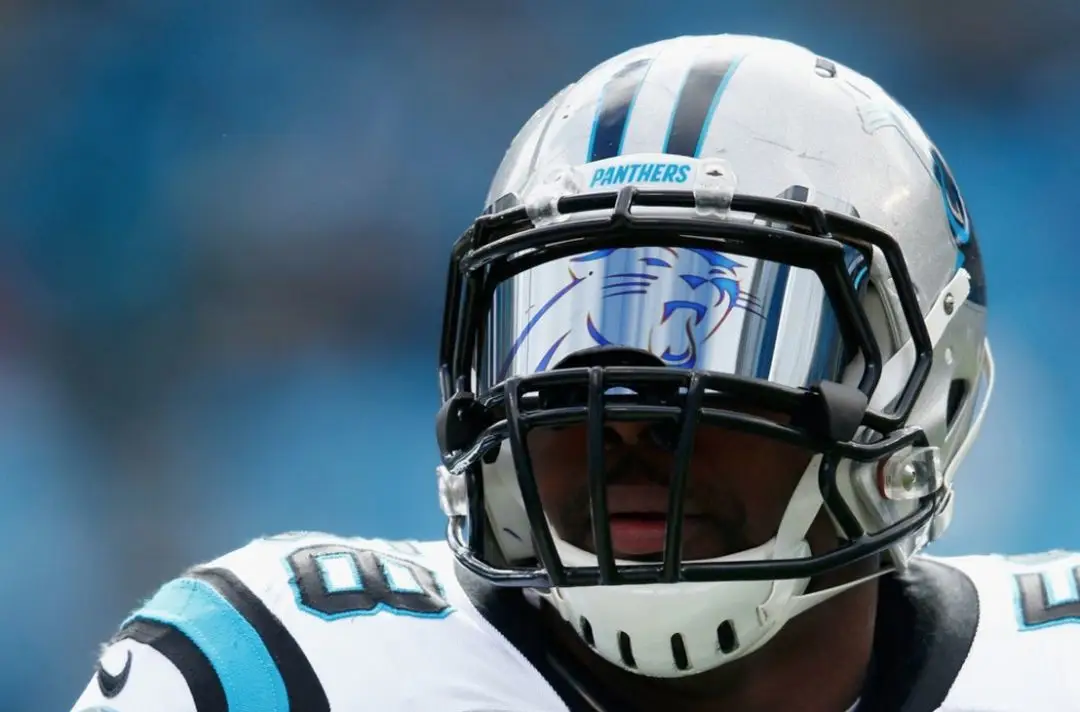
The Correct Way To Wear A Helmet
STEP 01: Measure Head Circumference
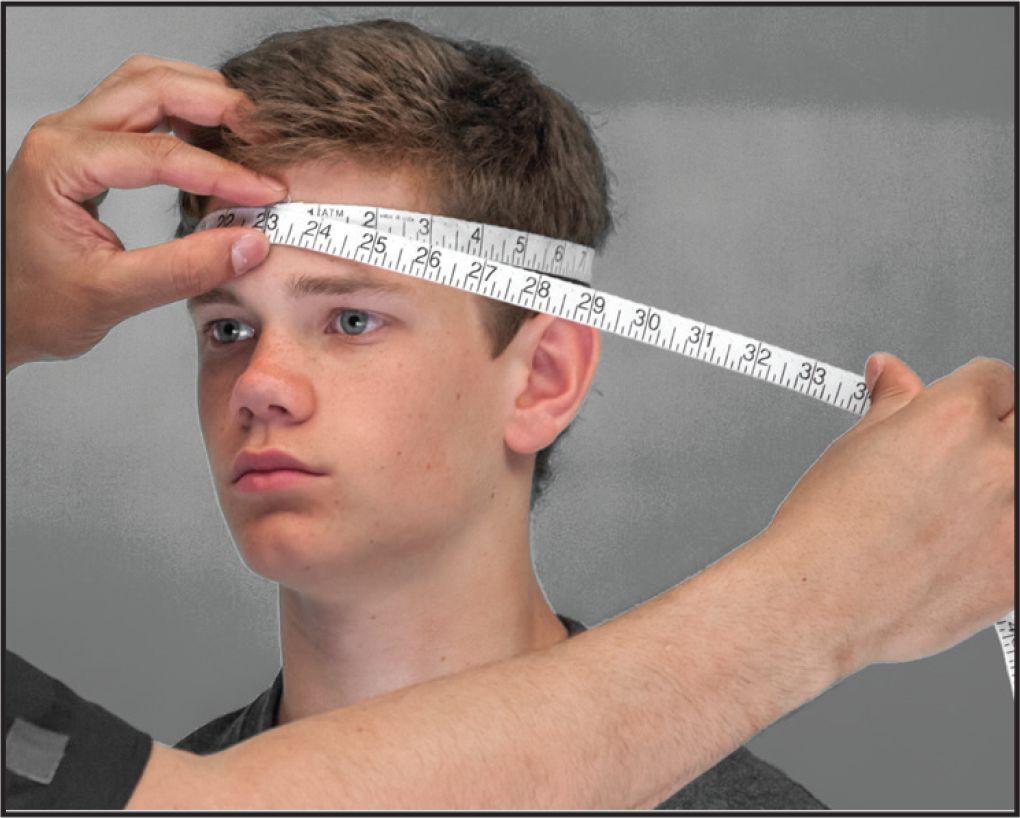
Use a tape measure to wrap around the head and record the value. The tape measure is located about 1 inch (2.54 centimeters) above the eyebrows. Refer to Riddell’s official recommended size chart and make your selection. If the head circumference value happens to be the boundary between two sizes (such as M and L both having 22 inches), it is recommended to choose the smaller size.

STEP 02: Put On/Take Off The Helmet
How to wear it?
Hold the helmet with both hands, press the thumb on the chin pad, and use the index finger to poke the ear hole on the helmet body. Place the helmet on top of your head, find the appropriate angle, and fasten it on your head, being careful not to exert too much force. If the upper end of the chin pad fits perfectly with the temple, it indicates that it is more suitable to wear. Adjust and fasten the chin strap.
How to pick?
Unfasten the chin strap buckle. Place your thumbs on the chin pad and your index finger on the ear hole of the helmet. Gently spread your hands outward, slowly push up, and remove the helmet.
STEP 03: Adjust Helmet Height
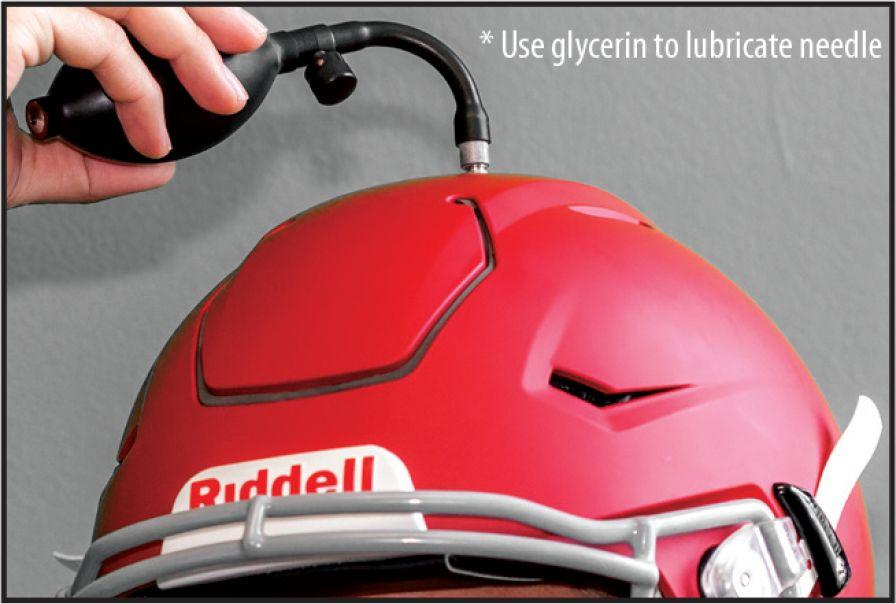
Please use the inflatable bag and needle provided by Riddell official. The air needle needs to be fully lubricated before insertion to avoid wear on the shock-absorbing air cushion inside the helmet. Please use glycerin for lubrication, do not use petroleum based lubricants or saliva. Adjust the air pressure using an inflatable bag (inflate or release appropriately), and then remove the air needle.
How to define ‘highly appropriate’? The front edge of the helmet is located about 1 inch (2.54 centimeters) above the player’s eyebrows. No ruler? Refer to the “two finger width” where the index and middle fingers are aligned.
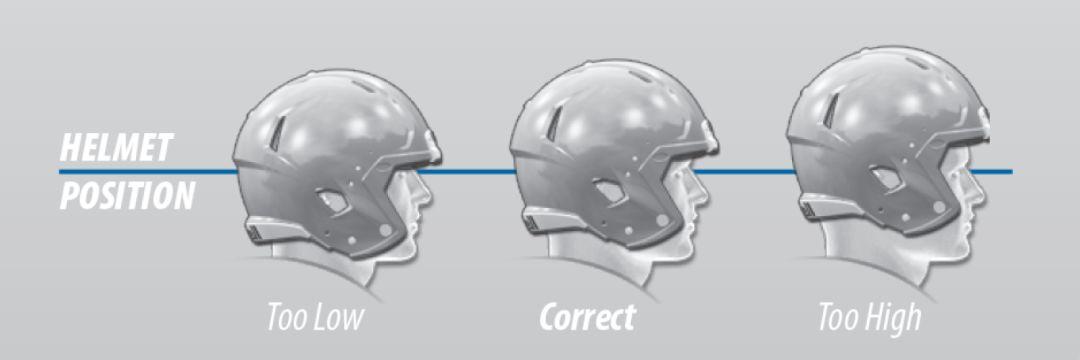
Correct in the middle is a reasonable adaptation height
STEP 04: Adjust the Back And Sides Of The Helmet
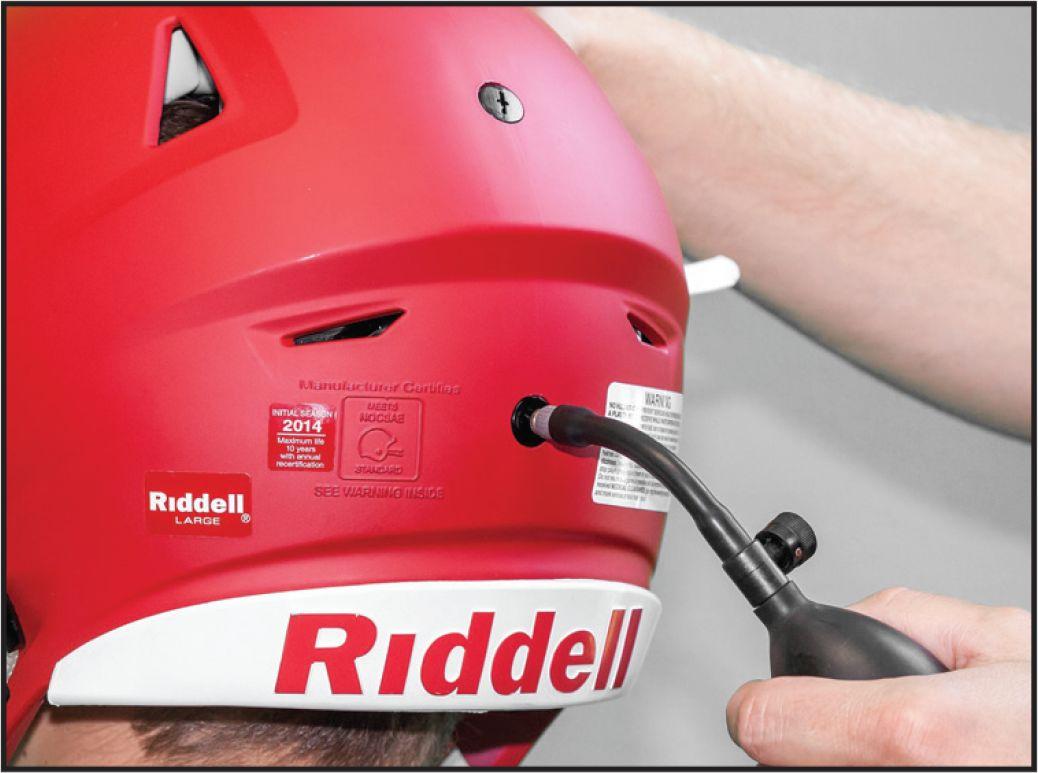
Use an inflatable bag and needle, adjust to feel comfortable overall. The precautions are the same as step three.
STEP 05: Adjust The Jaw Pad
The chin pad used in the Riddell SpeedFlex helmet can be inflated with adjustable air pressure. Use the inflatable bag and air needle, and insert the air needle into the side air valve to inflate. If using a non-inflatable chin pad, please choose different thicknesses according to the tightness.
STEP 06: Overall Inspection
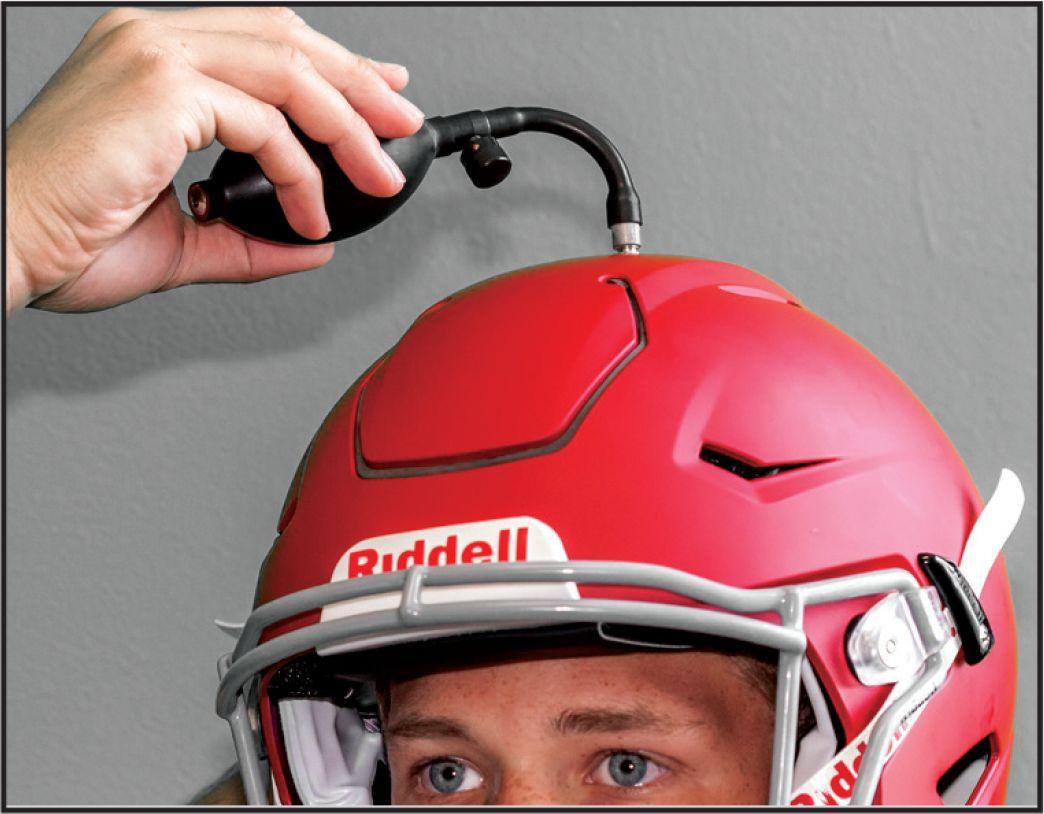
The forehead fits snugly against the forehead pad inside the helmet, leaving no gaps. Check criteria? The head should not move freely inside the helmet when shaking the head from side to side. If the helmet slides down easily from the forehead, inflate the top air cushion with the air bladder and adjust the height. Change to a smaller size helmet. Overall inspection method: interlace the fingers of both hands and press down on the top of the helmet. The player feels the pressure on the top of the head, not the forehead. If the pressure is on the forehead, it means that there is a problem with the fit and it needs to be adjusted. The front edge of the helmet is about 1 inch (2.54 cm) above the player’s eyebrows. To avoid injury and discomfort, do not wear it too high or too low.
STEP 07: Adjust The Chin Strap
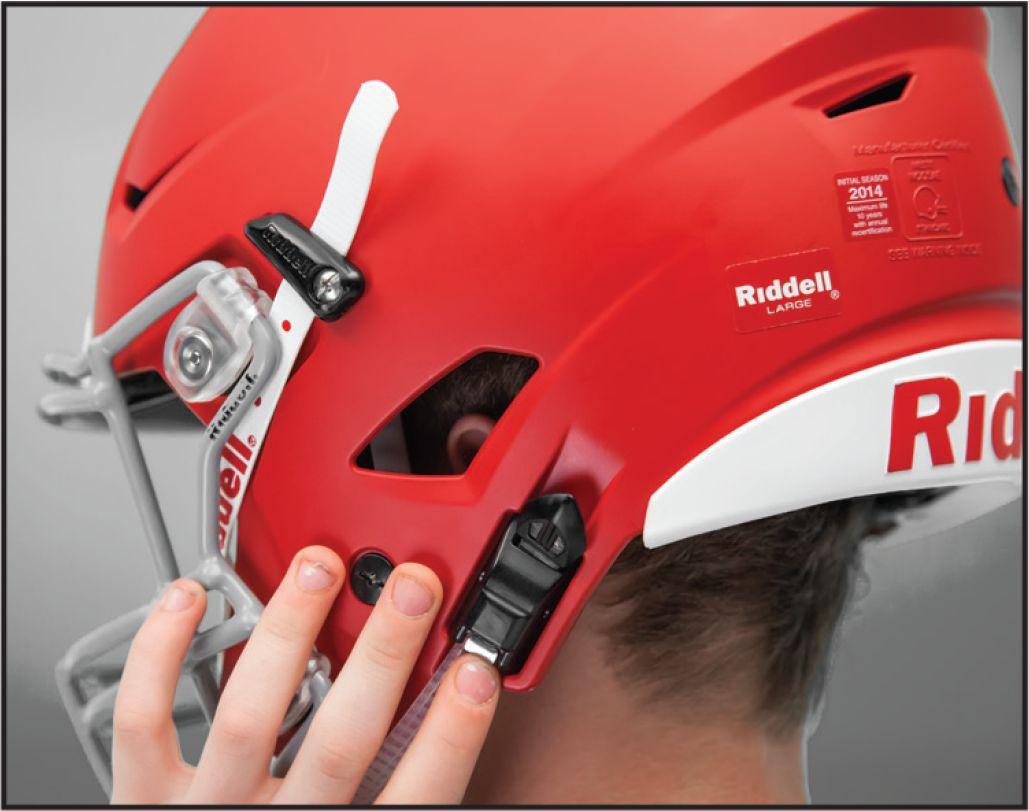
The upper and lower ends of the chin strap are fixed to the high and low locks on the side of the helmet. Align the center of the shell and buckle it on the chin. Adjust the length of the strap to ensure that the shell fits firmly against the chin. When tightening the chin strap, make sure the overall fit is comfortable and secure. Chin straps are available in a variety of sizes and styles.
Helmets can help reduce injuries and lower the chances of concussions, but they can’t completely prevent them.Almost all helmets have a label on the back that says something like “Precautions” or “Warning Statement,” meaning that football helmets can’t completely prevent concussions and head and neck injuries.
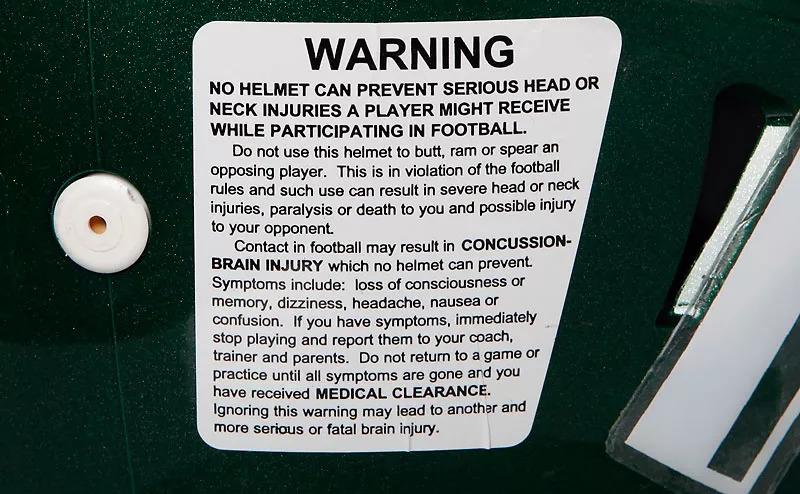
When choosing, pay attention to the two labels on the back of the helmet: the NOCSAE certification label and the helmet production year label. NOCSAE, the National Committee on Standard Operating Procedures for Sporting Equipment, conducts rigorous and extensive scientific tests to test and evaluate the quality, safety, and reliability of sports equipment. Football helmets certified by this organization meet the safety standards for American football games and training. The production year of the helmet will be clearly marked with large numbers, and the helmet is usually used for 10 years, and it needs regular annual inspection, maintenance, and care every year.
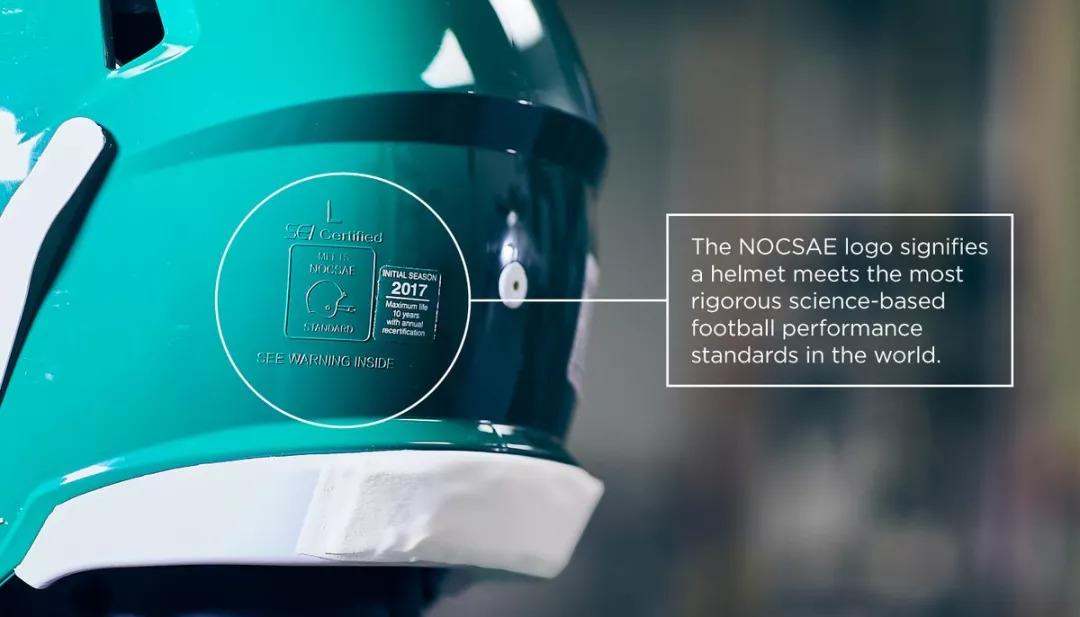
The logo on the left side of the helmet indicates NOCSAE certification, and the word 2017 on the right side indicates the year of manufacture.
What Brand Of Football Helmet Is Good?
Riddell SpeedFlex Youth Helmet
This helmet is highly rated for its advanced design and safety features, including a flexible shell and facemask to better absorb impact.
Schutt Youth Vengeance A11
Known for its durability and comfort, this helmet features a sleek design and offers excellent protection for young athletes.
Schutt Youth F7 LX1
This model incorporates advanced cushioning to enhance impact absorption, providing superior safety for youth players.
Riddell Victor Youth Helmet
A popular choice for its balance between affordability and protection, suitable for young players at various skill levels.
Designed for linemen, this helmet offers specialized protection with a focus on reducing impact forces to the head.


